Emotional intelligence in the workplace can greatly impact the success and productivity of a team. It involves understanding and managing your own emotions, being aware of other’s emotions, and adapting to new situations.
Traditional leadership models have primarily focused on technical skills rather than soft skills like emotional intelligence. Some leaders may not understand the impact of emotions on workplace performance and decision-making. At the same time, others may believe emotions are personal and have no place in the workplace.
Plus, developing emotional intelligence skills can be time-consuming and may not be seen as a priority for leaders focused on meeting short-term goals and targets. However, as awareness of the importance of emotional intelligence continues to grow, it is becoming increasingly clear that leaders who invest in developing their emotional intelligence and that of their teams can reap significant benefits for their organizations.
How Is Emotional Intelligence Being Used In The Workplace?
Emotional intelligence in the workplace is critical to mastering interpersonal skills, crucial for conflict management and effective communication. It involves understanding and regulating emotions to make thoughtful, objective decisions. With the ability to recognize others and their own emotions, employees can support a more collaborative and empathetic work environment. Assessment tools like MBTI and DISC can identify individual strengths and preferences, helping teammates to understand each other to drive success and well-being.
In this post, we will explore why emotional intelligence is so important in the workplace, provide examples of self-awareness, and share strategies for increasing emotional intelligence among teammates.
Why Is Emotional Intelligence In The Workplace So Valuable?
Individuals with high EQ tend to be better leaders, have stronger interpersonal skills, and are more effective in handling workplace stress and conflict.
For example, a study by TalentSmart found that 90% of top performers have high EQ. Another study by Hay Group found that leaders with high EQ have teams that are more engaged, more productive, and experience less turnover.
Research in the Journal of Organizational Behavior outlines that individuals with high emotional intelligence are better equipped to overcome one of the most significant obstacles in their work-life: employment gaps. These gaps can be involuntary, such as a termination, or voluntary, like taking time off to care for family. The higher an employee’s emotional intelligence, the more likely they are to navigate interruptions in their employment successfully.
It’s no surprise that high EQ is linked to increased job satisfaction, improved job performance, better relationships with coworkers and leaders, and employee retention.
And soft skills aren’t just great for creating a fulfilling and pleasant work environment. The link between profit and leaders with high emotional intelligence is clear. In one study, CEOs whose employees rated them high in character had an average return of 9.35% over a two-year period, nearly five times as much as companies with CEOs who had low character ratings.
Prioritizing emotional intelligence in the workplace can drive significant improvements to an organization’s bottom line. If high EQ among teammates can affect job satisfaction, performance, and employee retention, investing in EQ development within teams can be a wise business decision for leaders.
IF EQ In The Workplace Is So Important, Why Do Top-Level Leaders Resist Prioritizing It?
It’s not uncommon for leaders to push off emotional intelligence initiatives because they are familiar and comfortable with traditional measures of job performance. Things like technical skills and intelligence seem easier to quantify and measure.
A Wall Street Journal survey of 900 executives found that 92% said soft skills were equally important or more important than technical skills. But 89% of those surveyed said they have a “very or somewhat difficult time finding people with the requisite attributes.”
Additionally, they may not realize the impact of soft skills training in achieving long-term success. Further, the lack of an established or standardized method for measuring EQ could also lead to it being overlooked as a valuable metric for success.

For decades scholars have debated the relative importance of cognitive intelligence (IQ) versus emotional intelligence (EQ) to workplace performance. Research shows both are helpful. However, in the era of COVID-19, my bet is on emotional intelligence playing a much stronger role. –fastcompany.com
Remote work and other factors shaping the future workplace experience require stronger levels of communication and collaboration. As traditional workplace dynamics and routines have been disrupted, EQ becomes even more crucial in helping teammates navigate workload, well-being, conflicts, and fulfillment to create a place to thrive in their work.
We define emotional intelligence (EQ) as the power to identify, handle, and express emotions and to comprehend and empathize with the emotions of others. When it comes to the workplace, having a high EQ is crucial for building trust and managing conflict to be an effective team.
Self-awareness emerges from two places:
Internally: Understanding one’s desires, strengths, weaknesses, and impact on others.
Externally: Realizing how others interpret and experience you.
When it comes to internal and external self-awareness, it’s tempting to value one over the other. But leaders must actively work on both seeing themselves clearly and getting feedback to understand how others see them. The most highly self-aware people are actively focused on balancing the scale. – Harvard Business Review
Teams that exercise emotional intelligence do more with less drama. They are tuned into their internal emotional life, can manage those feelings, and transition that energy into positive team momentum.

HUMAN SKILL PROGRAMS ARE HITTING LIMITATIONS...
- Close the widening gap between learning and on-the-job application
- Overcome the tension of pausing productivity for development opportunities
- Integrate learning so it is actually in the flow of work
- The evolution of human skill development
- What Automated Coaching™ is and how it works.
What Does Self-Awareness In The Workplace Look Like?
Self-awareness is crucial to emotional intelligence, starting with understanding your emotions, behaviors, and thoughts. In the workplace, having a strong sense of self-awareness can take many shapes and forms, such as:
Acknowledging when you’re feeling overwhelmed, frustrated, or angry and taking proactive measures to manage those emotions
Being mindful of how your actions and words can impact others around you
Taking a step back and reflecting on your behavior to pinpoint areas that need improvement
Seeking feedback from your coworkers and superiors to understand yourself better.
Emotional intelligence is being able to understand your own emotions and manage them. It’s also the ability to observe others’ emotions, understand a situation, and adapt to remain productive at that moment.
By taking the time to understand your emotions, behavior, and thoughts and being proactive in managing them, teams can foster a positive productive work environment.
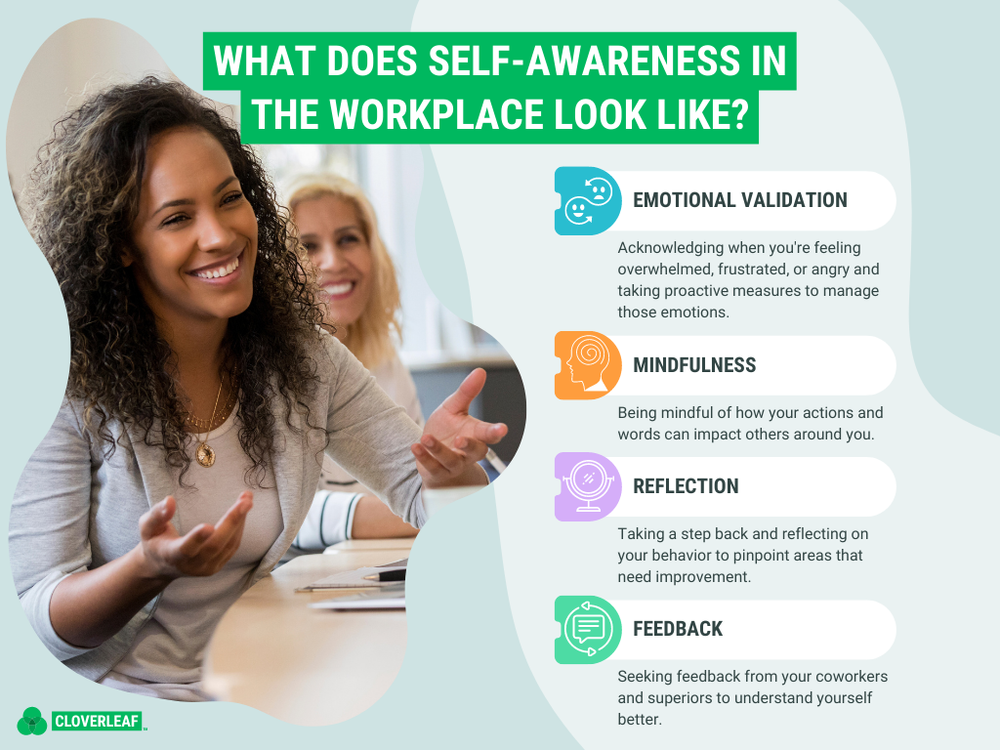
Examples Of Self-Awareness In The Workplace
Have you ever had one of those mornings where everything seems to go wrong? You arrive at work feeling overwhelmed. Every person can relate. Maybe you lost your dog, became angry in traffic, or experienced a disagreement with a family member before leaving the house. But, what if you could process those emotions and release them, allowing you to start your work day feeling recentered and in control?
Emotional intelligence can help you acknowledge and understand your emotions to prevent them from dictating your experience at work. Recentering your feelings to ensure they do not influence how you treat your teammates or drive you to make decisions because of things outside of work.
As a leader or coworker, it’s important to not only manage your own emotions but also be aware of the emotions of those around you. If you notice a colleague coming in with a negative demeanor or a bit huffy, take a moment to ask how they’re doing and if everything is okay. By simply asking questions, you can help them process their emotions and release any tension they might be feeling.
8 Questions To Help Teammates Process Their Emotions And Refocus On Work
How are you feeling right now?
Is there anything that you need to vent about or share?
Can you walk me through what has been bothering you?
What steps can we take to resolve the situation?
How can I support you at this moment?
Is there any specific task or goal you need help with?
Can you tell me more about your experience and how it has impacted you?
How do you see yourself moving forward from this situation?

By actively listening to team members verbalize their feelings, you can help them become more aware of their own emotions to help them feel more centered and able to move forward. This small act of empathy can go a long way in creating a positive work environment and improving overall workplace relationships.
How To Increase Emotional Intelligence Among Teammates
The best way to increase emotional intelligence in the workplace is to help improve self-awareness within each team member. Self-awareness enables individuals to identify areas for improvement, manage their emotions, and make more mindful decisions, which is foundational to increasing emotional intelligence.
Teams can proactively support EQ-based initiatives by implementing strategic efforts to help members feel, recognize, regulate, and communicate their emotions.
Utilize Automated Coaching™: Cloverleaf provides personalized, ongoing coaching tips to help employees develop self-awareness and powerful insight about teammates.
Celebrate Feedback And Reviews: Encourage employees to give and receive feedback in a safe by creating the structure to do so with performance management platforms.
Empower Learning and Development: Offer training programs that hone in on emotional intelligence, self-awareness, and personal growth.
Cultivate Open Communication: Work with your team leaders to establish consistent 1-on-1 meetings with direct reports to establish clear initiatives, trust, collaboration, and relationships.
Leaders play a pivotal role in shaping the culture and dynamics of the workplace. That’s why leaders must make emotional intelligence a priority. If not, the rest of the organization may not value developing their EQ or fully supporting initiatives.
And that’s where things can start to unravel. Even further, teams may lose their best talent as many seek places of employment that recognize the importance of emotional intelligence in the workplace.
Talent turnover is an expensive problem and, therefore, must be solved. Thankfully, it’s a problem that can be solved. For the most part, employees leave for reasons that are within the control of employers:
Culture
Work Environment
Growth Opportunities
Leadership Disconnect

By prioritizing emotional intelligence and creating an environment where employees feel valued and challenged, organizations can retain top talent and even attract it.
Conclusion
The next time you encounter an emotionally charged situation, consider using a simple checklist to guide your response. Ask yourself, “How am I feeling?” and “What can I do about it?”
Encourage others to share their emotions by asking, “How are you feeling today?” and “How do you want to show up for this?”
Starting a meeting with these questions can help team members process their emotions and be more present in the moment. Consider offering support by actively listening, responding, or taking action when addressing a situation. This approach can help increase emotional intelligence and create a more supportive and effective work environment.
If you’re looking for additional ways to enhance emotional intelligence in the workplace, visit the post that details an Employee Engagement Strategy For A Human-Centered Workplace.
A chronotype quiz helps you understand the biological clock that controls your body’s rhythms. Your Chronotype may be why you feel grumpy in the morning or at your best at 5 am. It may be why you feel exhausted in the evening or focused by 8 pm. This genetic, biological clock affects more than your sleep pattern. It affects when your optimal times to work, perform, eat, plan, exercise, and more.
Are you a Starter, Pacer, or Anchor? Take this quiz to find out. Discover your Chronotype today by taking the Energy Rhythm Assessment.
What Does Chronotype Mean?
Unlike a standard clock, not every person’s biological clock keeps the same time or pace. Of course, there’s a reason why people say they’re not a ‘morning person.’
Some individuals are more productive in the morning than others, while some function better in the evening. Everyone has an individual sleep schedule that affects their day-to-day performance.
Your body is programmed to wake, sleep, and function much better at certain times of the day than others. People fall into different ‘Chronotypes’ based on general awake and sleep preferences or needs. Your Chronotype reveals what rhythms are optimal for you to work positively with your body, not against it.
A chronotype quiz can help you understand your biological programming better and discover which Chronotype you relate to the most.
What Are The Three Chronotypes?
There are three primary Chronotypes – Starter, Pacer, and Anchor. These Chronotypes correspond with your unique biological clock.
In the workplace, Chronotype matters because it affects the times of day an individual will feel most alert, focus on tasks the best, and what jobs they do best during certain times of the day.
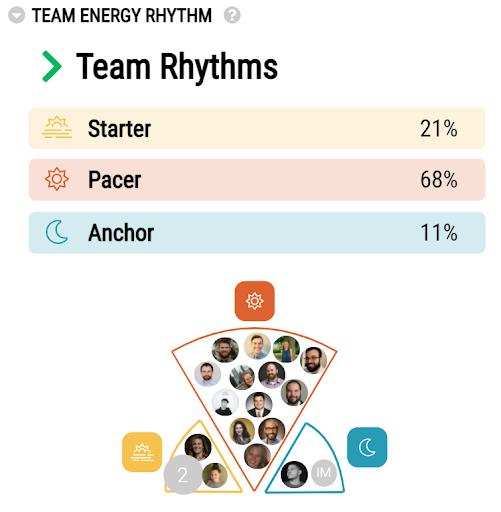

Having varied chronotypes on a team can benefit the team’s productivity and creativity if every team member knows their differences. Teams can get knowledge of their differences, use it to their advantage, and understand how they will feel through healthy collaboration.
The Cloverleaf Chronotype quiz can reveal a lot about a person concerning their energy patterns over a typical 9-5 workday, what tasks are most manageable for them to excel at during specific times of the day, and what their team’s flow may look like daily.
Using the Cloverleaf Chronotype Quiz, you can discover your Chronotype in just 90 seconds. The quiz includes questions to better understand your biological programming to reveal your Chronotype.
Cloverleaf’s Energy Rhythm Assessment draws from research about circadian rhythm and circadian typology. Circadian rhythm refers to the internal processes which regulate the sleep/wake cycle and affect people’s biological and psychological functioning in everyday life, health, and disease (Adan et al., 2012).
Your chronotype is one of three types:
- Morning type (the Starter)
- Midday type (the Pacer)
- Evening type (the Anchor)
The Starter Chronotype is about 15-25 percent of the population.
Starters are morning-type people. The Starter is an individual who enjoys an early sleep schedule and early wake time. Their peak happens in the early morning, and they experience their trough in the middle of the afternoon. This is around 12-1 pm time (lunch hours). Their recovery tends to occur in the late afternoon to early evening, around the end of their 9-5 workday.
The Pacer Chronotype is about 50 percent of the population.
Pacers are most productive during mid-morning. Pacers have a similar energy rhythm to Starters, but their peak happens in the mid-morning portion of the day. Pacers get up early and have their trough mid-afternoon, with a recovery period from late afternoon to early evening towards the end of their 9-5 workday.
The Anchor Chronotype is about 15-25 percent of the population.
Anchors are commonly known as the ‘Night Owl.’ The Anchor will often sleep in and be ready to sleep late in the evening. Their energy rhythm is similar to those that are considered Starters. Anchors experience their peak in the late afternoon to early evening at the end of a typical 9-5 day.
Anchors may have more variability during their trough than Starters or Pacers, but that trough may also be longer. Their trough happens early to mid-afternoon, with a recovery period in the morning (beginning of a typical 9-5 workday). The Anchor will often go to bed late into the night.
Pacers are the most common type among adults. And it’s important to remember that all Starters, Pacers, and Anchors experience a peak, trough, and recovery period in their day.
Understanding Your Chronotype Quiz Results
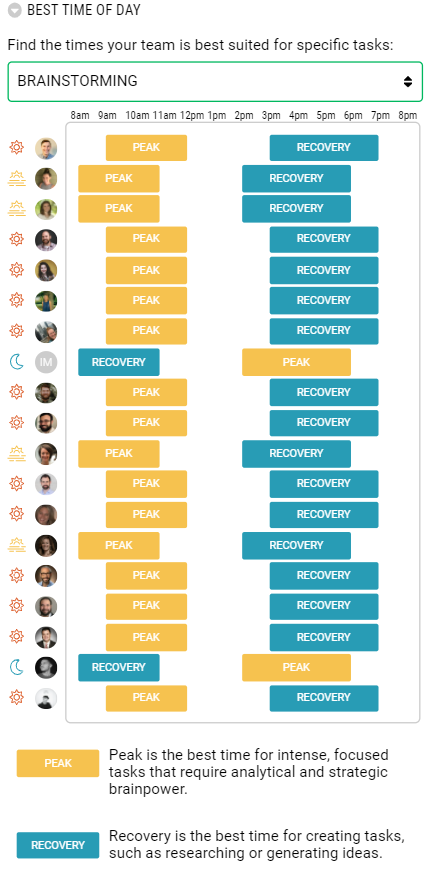
Knowing your Energy Rhythm can help you determine the amount of sleep and energy you need to excel. Learning more about your team member’s assessment results can help improve collaborative efforts.
Peak time is best for analyzing tasks, requiring lots of analytical and strategic brainpower.
A Trough is best for maintenance tasks – those low-brainpower, straightforward tasks like adding to your calendar or answering emails.
Recovery is best for Creating Tasks.
People experience a rise in energy, mood, and vigilance during their peak. People typically experience a dip in energy, mood, sleep performance, and care during their trough. During recovery, energy and mood take a sharp rise. The peak, trough, and recovery periods occur at different times for people, depending on their Chronotype.
Discover your Chronotype today with Cloverleaf. Take the Chronotype quiz to find out which Chronotype you are to start maximizing your effort and better utilizing your energy.

HUMAN SKILL PROGRAMS ARE HITTING LIMITATIONS...
- Close the widening gap between learning and on-the-job application
- Overcome the tension of pausing productivity for development opportunities
- Integrate learning so it is actually in the flow of work
- The evolution of human skill development
- What Automated Coaching™ is and how it works.
Enneagram 3’s are called The Achiever. They are motivated by the need to be productive, achieve success, and avoid failure. Three’s can also be playful, giving, responsible, and well-regarded by others in the community.
Type threes are often hardworking, goal-oriented, organized, and decisive. Threes can radiate confidence that others find assurance and inspiring. They like their work to convey their competency.
Type threes are efficient at getting things done. They aim to achieve personal goals and have a keen ability to size up tasks and understand the dynamics within teams.
Enneagram 3 Strengths
Drive
Efficiency
Optimism
Pragmatic
Confidence
Adaptable
Focused
Charisma
Threes enjoy motivating others to greater heights of success and are appreciated for their many successes. They enjoy finding ways to make it possible for others to get ahead. Their growth direction helps them to embrace honesty, commitment, and loyalty to others.
Development Opportunities For Enneagram Type 3s
Threes may need to monitor their willingness to be charitable and cooperative in their relationships. One way they can do this is by taking time to pause during a busy day to connect with an individual to learn more about their goals, cares, or desires.
Type threes may struggle with taking a break. Their strong drive for achievement can lead them to exhaustion with a relentless pursuit of their goals. Ambition and self-development are
good qualities, but threes must temper their drive with rest. Something as simple as taking a few deep breaths is enough to recharge their batteries and improve their outlook.
Another way type threes can transcend their personal interests is by working cooperatively with others toward goals. This effort can be a powerful way of finding their true value and identity.
Threes can also grow by being mindful of how often a desire for acceptance drives their actions.
Enneagram 3 Blindspots
Impatience
Scheming
Image-Driven
Lacking Transparency
Self-Promoting
Insensitive
Unhealthy threes are very self-conscious. They want to be admired and accepted according to social norms. In stress, threes become performance-driven to receive praise and attention.
The temptation of a three is efficiency at all costs. While type threes are often perceived as being highly relational, relationships can be in service of their need to be successful and drive for achievement.
An unhealthy three is mechanical, calculating, impatient, chameleon-like, scheming, image-conscious, self-promoting, success-driven, slick, political, and ignores feelings.
Identifying your type is not an excuse for specific behaviors. Such as, “I can’t restrain my drive for success; I’m a three.” Instead, threes can consider, “Perhaps I am allowing a need for recognition to get the best of me. Am I reacting to this to feel safe?”
Enneagram 3 Wings
A three can have a two or a four wing.
Threes with a two wing tend to be more people-oriented. They can be helpful, socially adept, and tuned in to others while using their charm. In stressful situations, they can become possessive, flattering, and manipulative.
Threes with a four wing tend to have a strong imagination. They are creative, introspective, and more subdued. Under stress, they can be moody, arrogant, and pretentious.
Enneagram Type 3 At Work
Threes bring excellence and adaptability to teams. Often extremely polished, threes can excel in roles that require selling, marketing, or going above and beyond to help and serve the target audience.
Threes work best in teams when given a role where their impressive results are valued. However, team members may find type threes challenging if they become too possessive of the work rather than exercising collaboration or delegation.
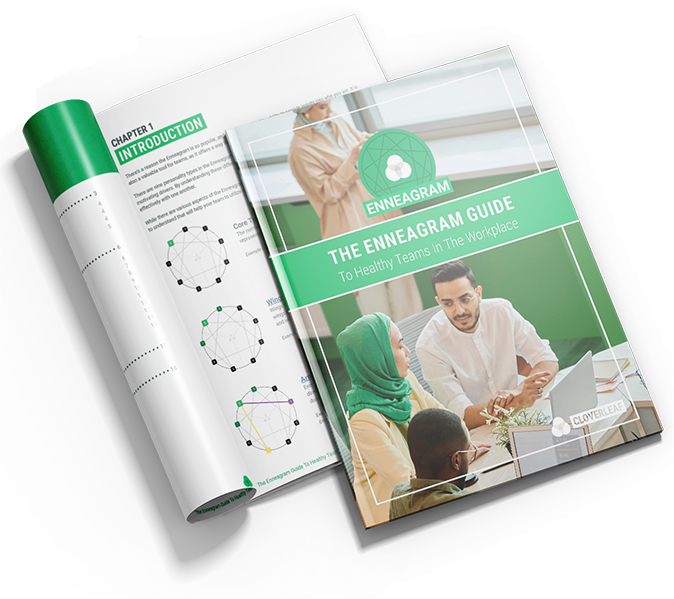
THE ENNEAGRAM GUIDE TO HEALTHY TEAMS
- A breakdown of each Enneagram type and their work style
- How to recognize the motivations of each type to mitigate conflict
- Tips for using the Enneagram to improve communication among team members
- Activities to help develop your team
A Coaching Tip to Help Enneagram 3s On A Team
In groups or teams, threes may experience frustration if others don’t automatically get on board with their proposed goals or plans. Threes need to recognize the differing perspectives or ideas that team members have for getting to the end goal.
As a practical tip, threes can consider using questions rather than statements when they don’t understand or disagree with a team member’s approach. For example, “Can you share more about the rationale behind that approach so I can better understand it?”
Threes can be a valuable asset to their team, realizing that not everyone will share in my drivenness but that everyone has a unique talent to contribute.
Type threes can also attend to the needs of others with energy, recognizing that interruptions may be a way of gaining new insight to reach a goal collaboratively.
Continue To Grow As An Enneagram 3
The Enneagram is helpful because it identifies fears and challenges related to each personality type. The goal is to recognize and use the insights to experience transformational growth.
A healthy three learns to balance their drive for efficiency and success with compassion and transparency. Threes can experience transformation by letting go of the belief that their value is dependent on the positive regard of others.
In some cases, a three will need to risk losing the approval of others to follow their own heart and to live truthfully. Healthy threes value genuineness above accomplishment and believe they are valuable for who they are, not what they have, produce, or achieve.
Did you know that Cloverleaf can help you use your Enneagram results to sharpen your professional development and work environment?
Click here to learn more about how to apply assessment insights to help your team thrive.
Are you unsure of your type or want to validate your number? Take our free Enneagram Test to help clarify your specific type. You’ll also receive an in-depth, accurate report to help you understand your number.
Want to learn about the rest of the Enneagram Types? Read more about the Enneagram: 1, 2, 4, 5, 6, 7, 8, and 9!

Enneagram 4’s are called The Originalist. They are motivated by a longing to avoid seeming ordinary. Fours like to search for deeper meaning, experience authentic feelings, and to be understood.
Type fours are typically empathetic in relationships, supportive, gentle, playful, passionate, and witty. They can form bonds quickly and prefer to be transparent. Fours strive to find novel and unexpected solutions to problems that others might overlook.
Fours like to use their talents to help awaken a sense of harmony within their surroundings. They have a gift for helping others develop an appreciation for beauty.
Enneagram 4 Strengths
Expressive
Authentic
Warm
Compassionate
Introspective
Creative
Intuitive
Supportive
Type fours are artistic and have a heightened sense of the moods and feelings of others with precision and profundity. Their growth direction helps them to act on their ideals, be more objective and organized, and be less self-absorbed.
Development Opportunities for Enneagram Type 4s
Fours can work to be proactive rather than putting off things until they are “in the right mood.” They can commit to being productive and finding ways to make meaningful contributions for their own good and that of others, no matter how small the tasks or effort may be.
Type fours may struggle with feeling ready to take on a challenge and argue that they need more time. However, small steps can help strengthen their resolve and bring out their best work.
Fours can also benefit from establishing self-discipline, such as setting a sleeping routine, maintaining an exercise schedule, and working regular hours.
Enneagram 4 Blindspots
Possessive
Sensitive
Melancholy
Eccentric
Detachment
Self-Absorbed
An unhealthy four can be moody, dramatic, or exaggerated. They may also become possessive, high-strung, and clingy if they feel misunderstood or to garner attention.
In stress, fours can hold grudges, fluctuate between hyperactivity and being overly sedentary, and go to extreme measures to avoid feeling mundane or ordinary.
Identifying your type is not an excuse for specific behaviors. Such as, “I can’t help being dramatic; I’m a four.” Instead, fours can consider, “Perhaps I am allowing my emotions to get the best of me. Am I reacting to this to feel safe?”
Enneagram 4 Wings
A four can have a three or a five wing.
Fours with a three wing tend to be more lively, ambitious, and outgoing. They may become attention-seeking and elitist in stressful situations.
A four with a five wing tend to be more contemplative, objective, quiet, and unconventional. Under stress, they can alienate themself and be withdrawn or pessimistic.
Enneagram Type 4 At Work
Fours bring creativity and a greater sense of awareness to teams because they are naturally oriented toward feelings and aesthetics. Type fours can help ensure goals are created and executed in a manner that aligns with the vision and culture of the team.
Team members may find a type four challenging to work with if they become self-absorbed or isolate themselves from fully participating in the group.
Fours work best in teams when given the opportunity to share their creative abilities and unique perspective concerning projects.

THE ENNEAGRAM GUIDE TO HEALTHY TEAMS
- A breakdown of each Enneagram type and their work style
- How to recognize the motivations of each type to mitigate conflict
- Tips for using the Enneagram to improve communication among team members
- Activities to help develop your team
A Coaching Tip to Help Enneagram 4s On A Team
Within a team, fours may detach themselves from situations that don’t particularly move or inspire them or if difficult team dynamics are not being addressed. It’s important for fours to remain tuned into their team and recognize when they have the tendency to break away.
As a practical tip, in group settings, when fours notice themselves getting distracted or feel ready to disengage, they may consider sharing a thought, idea, or question with the team to help stay focused.
Fours can help others solve problems by offering their creative ideas or providing aesthetic suggestions that can enrich others, realizing that one of their gifts is making the ‘small’ things feel special.
At work, their style is expressing themselves through creativity. Whether that is through art or helping to problem solve a difficult situation. Fours can bring a new, alternative approach to the work setting that is fresh and otherwise may have never been represented.
Continue To Grow As An Enneagram 4
The Enneagram is helpful because it identifies fears and challenges related to each personality type. The goal is to recognize and use the insights to experience transformational growth.
Fours can fall prey to feeling envious of others, especially if they deem them to have a unique perspective, quality, or talent. Because type fours fear being perceived as ordinary, they are susceptible to feelings of discontentment.
The way of personal transformation for a type four is to practice self-regulating their emotions and thoughts. Fours must realize that everyone has flaws and they have much to appreciate concerning their own experiences.
Fours can move beyond being entangled in their emotions by embracing their capacity to exercise self-discipline and use their creativity to serve others. It is a sign of health when a four can experience what they feel without allowing their emotions to overwhelm them or sabotage their goals.
Did you know that Cloverleaf can help you use your Enneagram results to sharpen your professional development and work environment?
Click here to learn more about how to apply assessment insights to help your team thrive.
Are you unsure of your type or want to validate your number? Take our free Enneagram Test to help clarify your specific type. You’ll also receive an in-depth, accurate report to help you understand your number.
Want to learn about the rest of the Enneagram Types? Read more about the Enneagram:1,2,3,5,6,7, 8, and 9!
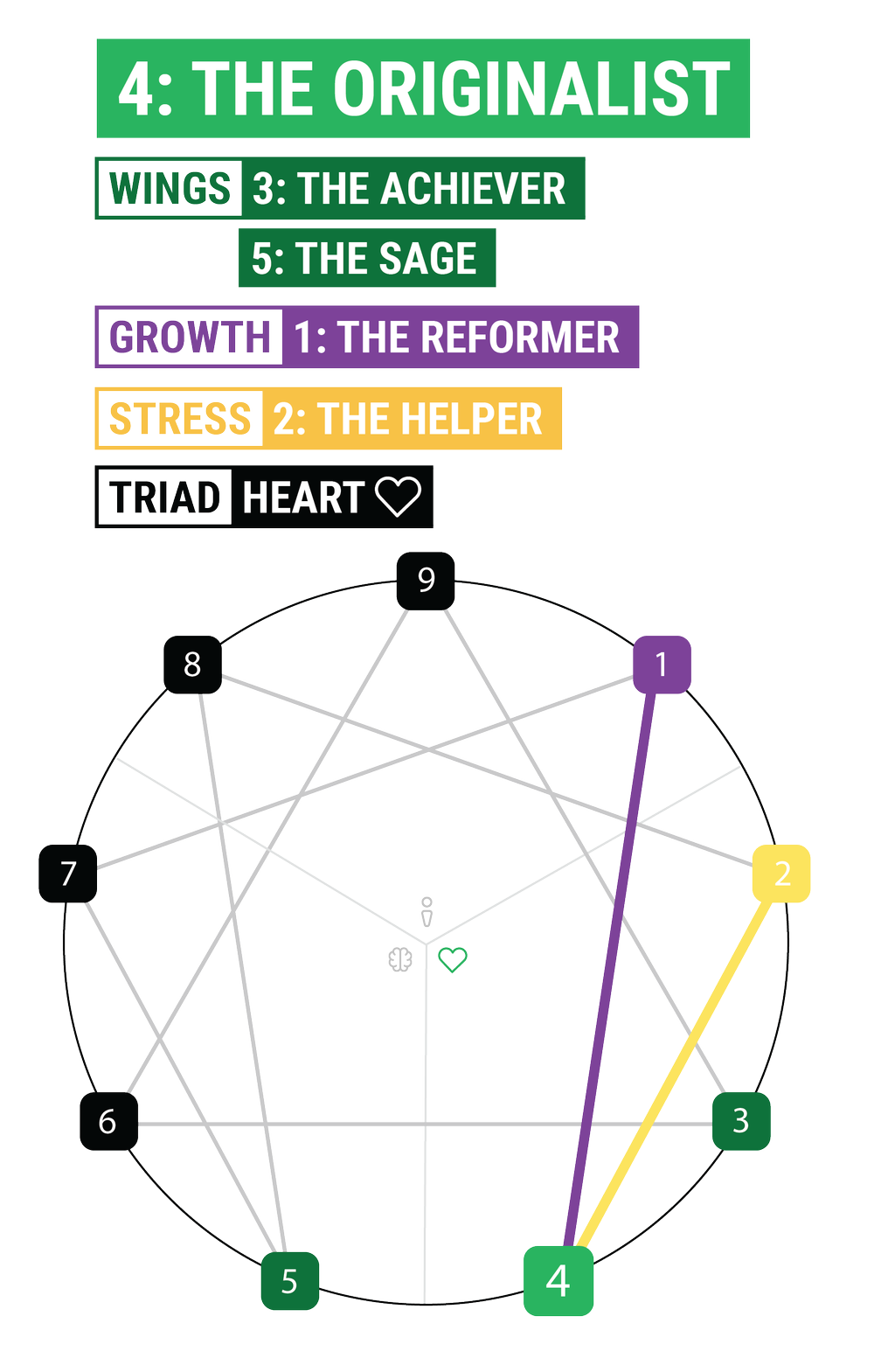
Enneagram 7’s are called The Enthusiast. They are motivated by a desire to be happy. Sevens like to plan enjoyable activities, contribute to the world, and avoid suffering or uncomfortable feelings.
Type sevens enjoy introducing others to new experiences and adventures. They often prefer to juggle tasks at once because they are quick-minded and can learn new things quickly.
Sevens typically radiate joy and optimism, express childlike astonishment, and experience life as a gift. They are full of good humor, playful, a share a disarming type of charm.
Enneagram 7 Strengths
Enthusiastic
Fun-loving
Spontaneous
Imaginative
Confident
Charming
Curious
Outgoing
Light-hearted
When Sevens are secure, they are visionary, appreciative, sober-minded, and practice being present with others. Their growth direction helps them to practice discipline, process emotions, and accept the good and bad of life.
Development Opportunities for Enneagram Type 7s
Sevens can practice recognizing moments of impulse and learn to observe these desires rather than give succumb. Type sevens can pause taking action, gather feedback, and better assess which desires or ideas are worth acting on.
Sevens can also earn to appreciate silence and solitude: rather than noise or activity to distract them. By learning to live with less external stimulation, sevens can find satisfaction in less consumption and periods of solitude.
Type sevens should make it a habit to choose quality over quantity, especially in their experiences, by giving their full attention to the immediate moment. Living with constant anticipation of future events can undermine the possibility of finding satisfaction.
Enneagram 7 Blindspots
Escapism
Impulsive
Naivety
Anxiety
Self-Centeredness
Difficulty Committing
An unhealthy seven can be superficial, narcissistic, indulgent, irresponsible, inconsistent, and scattered. It is hard to confine an unhealthy seven. Sevens can become oblivious to their weaknesses and those of others.
Sevens can put themselves at risk because of their naiveté and are sometimes unrealistic, lacking the self-discipline to say no or pause from taking action.
Identifying your type is not an excuse for specific behaviors. Such as, “I don’t like commitments; they’re too restrictive. I’m a seven.” Instead, sevens can consider, “Perhaps I am being self-centered or running from difficult feelings. Am I reacting to this to feel safe?”
Enneagram 7 Wings
A seven can have a six or an eight wing.
A seven with a six wing can tend to be more light-hearted, dutiful, and committed. They may become fidgety, sensitive, hesitant, and anxious in stressful situations.
A seven with an eight wing tends to be more assertive, powerful, and confident. Under stress, they can become self-centered, indulgent, self-centered, and impatient.
Enneagram Type 7 At Work
Sevens bring lightning-fast action and team spirit to a team environment. They have a knack for making teamwork fun, ensuring members enjoy themselves, even while working hard.
Teams members can find sevens challenging to work with if they become overly scattered or busy, making it difficult to prioritize initiatives and complete objectives. Typically, sevens can do their best work in a role that permits variety, spontaneity, and socializing.

THE ENNEAGRAM GUIDE TO HEALTHY TEAMS
- A breakdown of each Enneagram type and their work style
- How to recognize the motivations of each type to mitigate conflict
- Tips for using the Enneagram to improve communication among team members
- Activities to help develop your team
A Coaching Tip to Help Enneagram 7s On A Team
In groups or teams, sevens can get engaged and excited about an idea being discussed or debated. Sevens need to invite the ideas of others, even if those ideas don’t come as rapidly as their own.
As a practical tip, sevens may consider self-coaching in the moment and prompt themselves to ask someone else about their perspective when they notice themselves getting overly enthusiastic!
Sevens are highly creative and enjoy brainstorming ideas outside the norms. Sevens have great energy and can take on projects alone but sometimes have difficulty sticking to deadlines. They enjoy autonomy and can figure out how to get the work done; however, deadlines are helpful.
Continue To Grow As An Enneagram 7
The Enneagram is helpful because it identifies fears and challenges related to each personality type. The goal is to recognize and use the insights to experience transformational growth.
Sevens need to remind themself that problems will not go away, and it is best to face them rather than deny or gloss over difficult situations. They can also benefit from trusted friends or coworkers who help them stay in touch with their feelings and create space to express them.
Painful emotions can be terrifying to a seven, and they will find ways to avoid them. Type sevens appreciate confidants who will be gentle with criticism and feedback.
Sevens are the consumers of life, they want to take it all in. They do not want to miss out on anything and can suffer from “the grass is always greener” syndrome. This can lead them constantly seek new experiences and excitement.
The way forward for a seven is to practice is to pay attention when they are avoidant and articulating the issue; doing so can lead to fulfillment.
Seven love to think about the future, but transformation happens by living in the present. When sevens give preference to others and choose to be present, they can experience profound joy and find gratitude in the moment.
Did you know that Cloverleaf can help you use your Enneagram results to sharpen your professional development and work environment?
Click here to learn more about how to apply assessment insights to help your team thrive.
Are you unsure of your type or want to validate your number? Take our free Enneagram Test to help clarify your specific type. You’ll also receive an in-depth, accurate report to help you understand your number.
Want to learn about the rest of the Enneagram Types? Read more about the Enneagram:1,2,3,4,5,6,8, and 9!
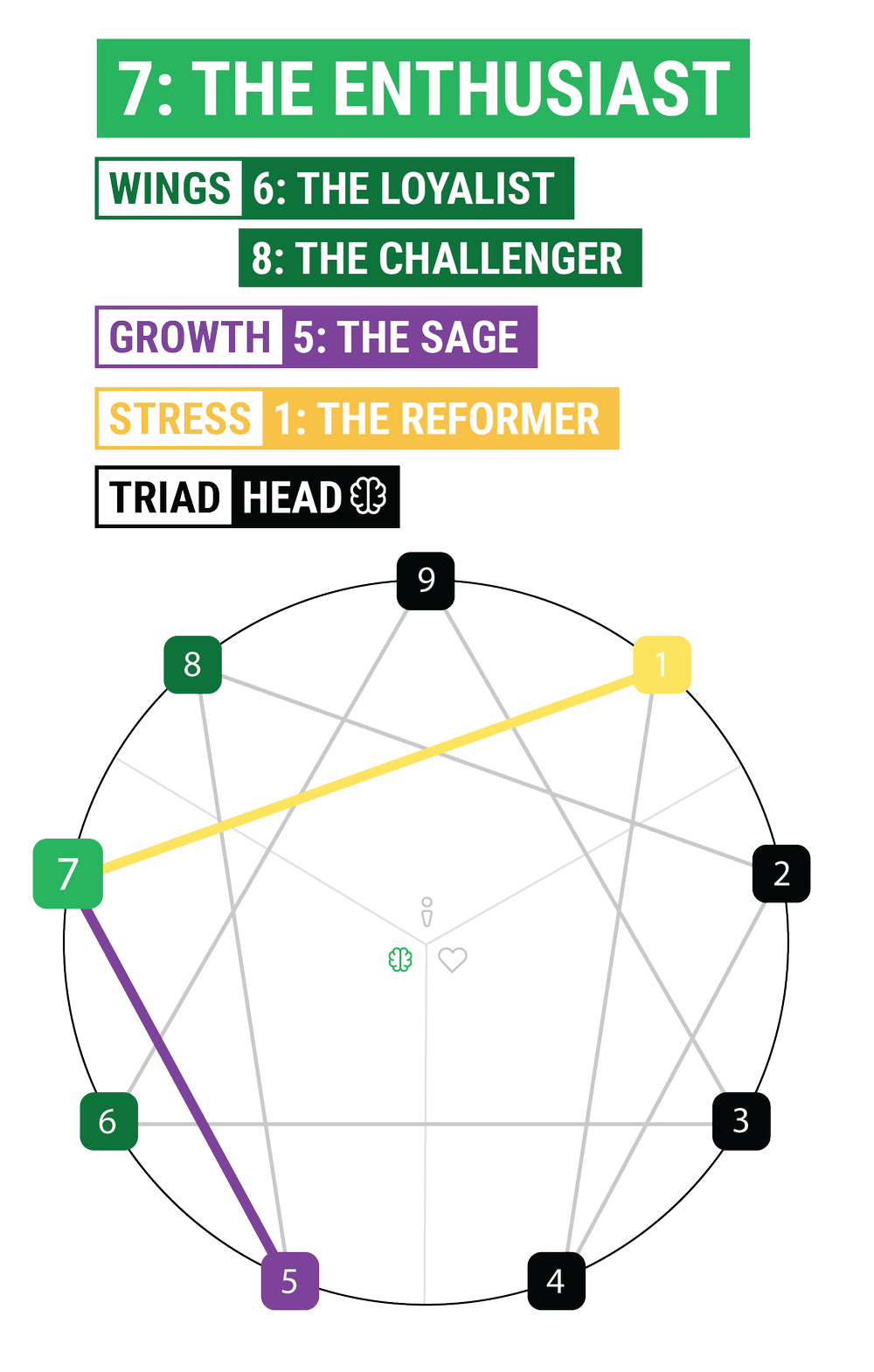
Hard times are unique opportunities to deepen relationships. But we may not know how to get a deep and vulnerable conversation started, especially in a work environment.
Using Enneagram group discussion questions can help individuals and team members learn more about one another. If you or a coworker do not know your Enneagram type, take our free assessment to help guide your conversation.
In all meaningful discussions, there are two roles – the listener and the processor. One person should be the processor for all three questions, while all others practice as listeners.
The listener’s main role is to…listen! Listening can be difficult. When someone shares their experience, it’s normal to want to respond quickly with something like, “Me too. I was thinking….”
However, this attempt to relate quickly can unintentionally prohibit the other person’s ability to continue processing. The listener must resist the urge and focus on listening. The listener can ask clarifying questions to help keep all focus on the processor, giving them safe space and time to think out loud.
The processor’s main role is to…process! The processor should try to elaborate and avoid giving one-sentence answers. Be curious about yourself, honest about difficult insights, and hopeful about how discussing the Enneagram can help you discover your unique work style and motivations.
Below are three Enneagram group discussion questions that can help you use the Enneagram at work or with friends to increase personal growth and development.
Note: Before starting, the listener will need to know the processor’s enneagram type.
Question #1: Listener asks Processor: “As an Enneagram Type ____, your core fear is likely ____. In what ways do you think that can affect you?”
For reference, below are the core fears of each Enneagram Type.
Enneagram 1: Being corrupt, losing a sense of integrity; being wrong or lazy
Enneagram 2: Being unloved or unwanted
Enneagram 3: Being worthless or undesirable apart from achievements; being disrespected
Enneagram 4: Not being unique and being seen as worthless for this
Enneagram 5: Being helpless or incompetent; not being knowledgeable
Enneagram 6: Not have direction or support; not be able to keep going on their own; uncertainty
Enneagram 7: Needs and wants are not fulfilled by others; pain; deprivation
Enneagram 8: Being limited or controlled
Enneagram 9: Being disconnected from others, being confronted
Do you need help navigating your work relationships or developing a work culture where people can thrive? Download the free Enneagram Guide To Healthy Teams In The Workplace.

Unlock the Power of The ENNEAGRAM: Your Key to Building A Thriving Team
- A breakdown of each Enneagram type and their work style
- How to recognize the motivations of each type to mitigate conflict
- Tips for using the Enneagram to improve communication among team members
- Activities to help develop your team
Question #2: The Listener asks the Processor: “As an Enneagram Type ____, you’re likely motivated by ____. What are two things you can do this week that motivate you?”
For reference, below are the core motivations of each Enneagram Type.
Enneagram 1: Solving problems and bringing order and organization to chaos
Enneagram 2: Helping others
Enneagram 3: Optimism and achieving goals
Enneagram 4: Creativity, finding deeper meaning, and experiencing authentic feelings
Enneagram 5: Learning and having a deep knowledge of topics
Enneagram 6: Creating and finding security, having a duty or responsibility to complete something
Enneagram 7: Being happy and contributing to the world to relieve suffering
Enneagram 8: Being self-reliant and fighting for just causes
Enneagram 9: Keeping the peace and connecting others
Question #3: The listener asks the Processor: “As a friend (or coworker), what is the best way I can help you with this?”
Whether you are a new manager hoping to build trust or a coworker who wants to understand a teammate better, asking these three questions can lead to powerful learning about one another.
To further explore how to improve workplace communication, check out the post, 4 Effective Enneagram Activities To Help Develop Your Team.
Did you know that Cloverleaf can help you use your Enneagram results to sharpen your professional development and work environment?
Click here to learn more about how Cloverleaf turns leading personality and strength-based assessments into actionable coaching inside your enterprise organization.

